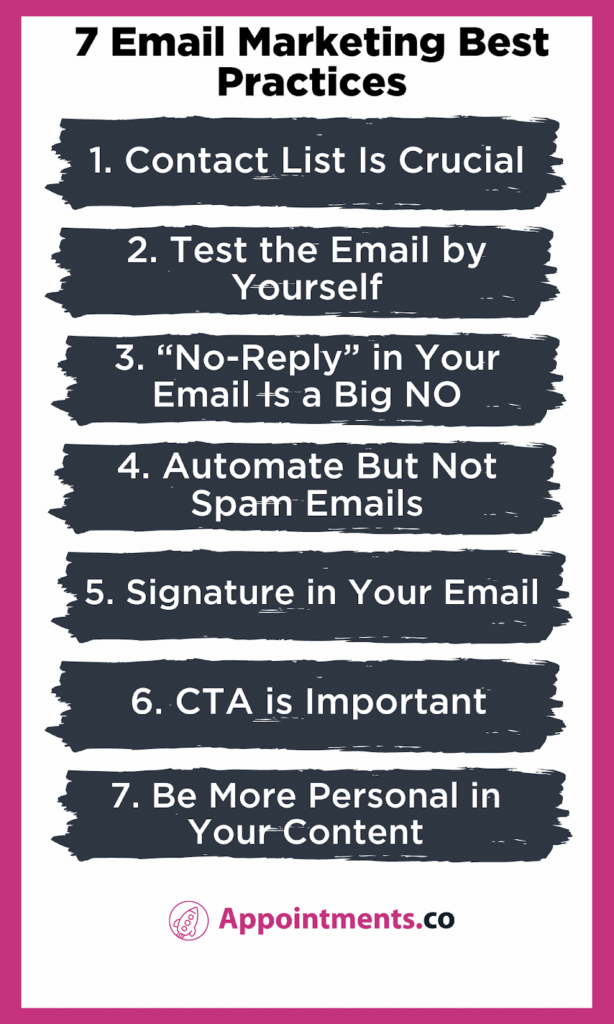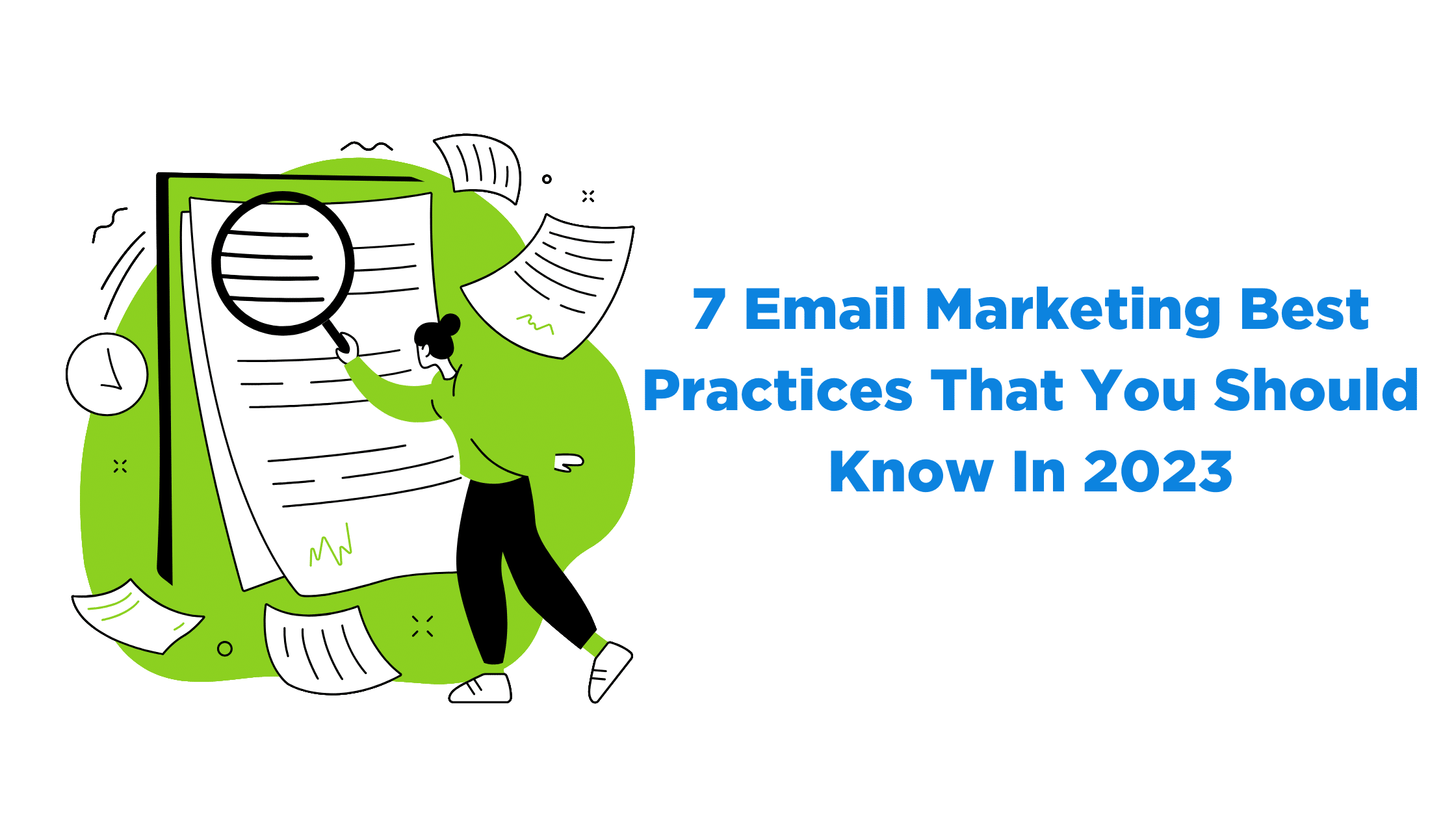Email marketing is your best friend when you have resources and time constraints, and also it is relevant in the current digital marketing world. It is even safe to say that email marketing best practices can drive more engagement and sales for your business.
In 2023, can email marketing be relevant and powerful? Clearly, other methods of marketing, such as influencer marketing have the potential to reach a much wider audience than email marketing.
You might be right. But email marketing is not just about getting messages to your customers, it is much more personal than that.
Marketers and leaders prefer email as the primary form of communication over other forms of medium, and stats are proving it!
In 2023, a staggering amount of emails will have been sent, 347.3 billion emails already to be exact. This is an increment from the last year by 4.3%
Around 89% of digital marketers are preferring email as their primary mode of generating leads for their business.
Lastly, the ROI for email marketing is a humongous 3600%, meaning that for every dollar you spend, you can get $36 in return.
NOTE: All these stats are for 2023, taken from Snov.io.
These are some of the stats about email marketing, but with this, we can surely say that email marketing is still reliable and relatable in today’s digital marketing world.
Now, we know the importance of digital marketing, but how do we create a good marketing campaign or what are all the best email marketing best practices to be included in your marketing campaign?
This is the question that we predominantly discuss in the upcoming sections.
Table of Contents
7 Email Marketing Best Practices in 2023

Even if you use other marketing techniques, it is a no-brainer that you should incorporate email marketing strategies in your campaign. With the following email marketing best practices, there is a high probability that you can see a positive impact on your marketing campaign(s).
- Content List is Crucial
- Test the Email by Yourself
- “No-Reply” in Your Email
- Automate But Not Spam
- Signature in Your Email
- CTA is Important
- Be More Personal in Your Content and Subject Line
1. Contact List Is Crucial
The first rule in email marketing is the creation of a contact list. Among all the email marketing best practices, this holds a major part. Because the entire process starts with this contact list. So, what is the best way to do that?
Incorporating the sign-up email into your website is the best way. People who visit your site are your potential leads, and getting their information, such as their email address, via sign-up is an effective way to get the necessary information to build your contact list.
Most people usually buy the contact list. That is one of the core issues in email marketing. There should be thousands of contacts on that list, and it can be tedious to find your target audience in those lists.
In summary, buying a mailing list is a complete waste of resources and time, and you cannot get the best result from that.
2. Test the Email by Yourself
Now you have your contact list, the next thing in the list of email marketing best practices is to send an email with rich information or content to your targeted audience.
But do not. Do not send emails to your audience yet. First test it by sending it to yourself and testing it. Meaning checking the design, and how well the email is optimized can be easily carried out by sending it to your inbox.
Note all the elements, such as CTA (Call-to-Action), that are not optimized well. Work on those elements again and send the newly updated email to your inbox. Now check the email. Test “n” a number of times until you get the best-optimized email.
Simultaneously check whether emails are optimized for different devices. Ensuring that the email is user-friendly on all devices is one of the most crucial sub-step in this email marketing best practice.
Lastly, check both text and HTML format. This helps to alter the design and improve the overall readability of your email on every device.
3. “No-Reply” in Your Email Is a Big NO
Now, you are ready with your contact list and the optimized content for your email. The next task is to send the content to your targeted audience. First things first make sure that your sender email does not contain a “no-reply” phrase.
No-reply means the conversation is closed and email marketing is all about engaging with customers and building a relationship.
One of the main objectives here is to make the customer take action toward your business, and no-reply actually indicates that you do not want your customer’s reply, and are literally neglecting their interest in your business.
This is one of the most common mistakes by many marketers today. A good email can get you an open rate above 10%.
The presence of a no-reply tag has a higher possibility of not achieving your targeted open rate. So, what you can do is, when automating your email to your contact list, include the first or last name or even both in the email address (send email address).
This helps to make customers think that the email is personalized and coming from a real person instead of a bot. Personalized emails can get you a good open rate.
4. Automate But Not Spam Emails
Your contact list may have thousands of your potential customer’s information. It is very difficult to send each tailored email to each potential lead within a targeted time. The solution for this scenario is automation. Automation helps to send the correct emails to the correct customer on time. But, automation may lead to one of the main issues in email marketing, which is spam.
This spam issue has an indirect impact on the open rate (based on emails sent per week). First pay keen attention to emails that are being sent to your potential leads.
Introductory emails may not have this issue, but for follow-ups that is a different story. Some may spam the follow-up and this can lead to a poor open rate.
First, determine how many follow-ups are best for better customer engagement and open rate. It is best to have three follow-ups in general, but do not go beyond five.
In summary, it is recommended to have one email sent per week in order to see the following KPIs in the better form:
- Open rate
- Unsubscribe rate
- CTR (Click-through-rate)
- Click through the open rate
- Spam rate
- Bounce rate
- Number of cycles (to check how many of your customers are in which customer lifecycle)
5. Signature in Your Email
Another key feature in the list of email marketing best practices is signature. You have the best content for your email and automation is ready to push the emails to your customers. But, one most important things to do before pushing emails is the insertion of your signature. Many marketers tend to forget the importance of signatures in their emails.
The signature denotes two things:
- It helps your customer to understand your company’s motive and the sender’s role in it.
- It creates awareness about your brand, a small step to increase the spotlight on your business.
Not having a signature is not an email marketing best practice. It is understandable that it can be missed sometimes during the massive email push in a large campaign. But that too is recommended to be avoided.
This can be done, by inserting the signature at the designing stage itself before the campaign starts. This way you don’t have to worry about signatures being missed when bulk emails are being sent to your potential customers.
6. CTA Is IMPORTANT!
Do you know? Stats say that almost 70% of small-scale B2B (Business to Business) website does not have a CTA. A good and personalized CTA can convert around 42% of visitors (potential customers) into good leads.
As said, you must have a proper and clear goal for your email and, usually, that can be getting your customers to engage with your email and take the necessary steps for your business.
Always have a personalized, unique, catchy, and lastly small CTA in your email. Your CTA can vary from downloading paperbacks, whitepapers, or even e-books. Align your CTA motive to your overall email intention.
Experiment with the placement, some customers may prefer at the start of the email, and some may even prefer at the bottom. Perform some A/B testing to get an idea from your customer base about the effective placement of your CTA.
In summary, CTA is one of the most crucial elements, and it needs to be included in your emails.
Also Reads
7. Be More Personal in Your Content and in the Subject Line
All the above elements are directly linked to email marketing best practices, but there is no fixed structure when it comes to the content of your email. It is one of the few elements in email marketing that can be unique to your brand.
Understand your customer’s pain points and find out their specific needs. Tailor the email related to that specific pain point and derive a solution for how your service can help to overcome that specific pain point(s).
For example, if you are an e-commerce website, one of the main pain points from your customer’s perspective can be the shipping charge.
Including no shipping charges in your CTA can drive more engagement and ultimately sales to your business.
Mention the pain point and a small hint of a direct answer in the subject line of your email.
Ensure your subject line character is 60 characters or below. Also, do not add any marketing or spammy terms. It gives the feeling to your customer that you prefer sales over their pain points.
Lastly if possible, try to add statistics related to the content of the email in the subject line. This gives assurance to your customers that your business is data-driven and finding solutions on a larger scale.
Suggested Reads
- Best Guide To Elevate Your Email Marketing Skills in 2023
- Email Marketing Campaign 101 – Important Benefits and Types
FAQs
1. Is email marketing still effective in 2023?
The answer is a huge yes. Around 89% of digital marketers prefer email as the primary mode of generating leads for their business. Email marketing has the ability to bring substantially more ROI than other forms of marketing (around 3600%).
2. Is there a future for email marketing?
Yes, there is a good future for email marketing. Machine learning and AI are improving every day, and emails are getting personalized at a good pace. By 2027, it is estimated to reach $17 billion USD.
3. What are the focus areas of email marketing?
There are seven focus areas of email marketing, and they are as follows:
– Contact list
– Test Email
– No “No-Replay” in your email address
– No spam emails (follow-ups)
– Insertion of a signature
– Include CTA in the email
– Personalized content
Final Thoughts
If done right, email marketing can be a powerful tool in your arsenal for your marketing campaign, and get more leads and ROI in a respectable amount of time. Is there a future for email marketing? Definitely yes. There is a huge future for email marketing, and including the listed best practices can help you to attain your business goals.
Always be personal about the emails. That is the only way to gain your lead’s trust and grow your business.
We, at Appointments.co strive to provide the best results for clients in a short amount of time. We specialize in identifying the ideal customer profile and delivering high-quality results. Check out our website, or talk to us now, to bring your business to the next level!
Illustrations – Storyset



